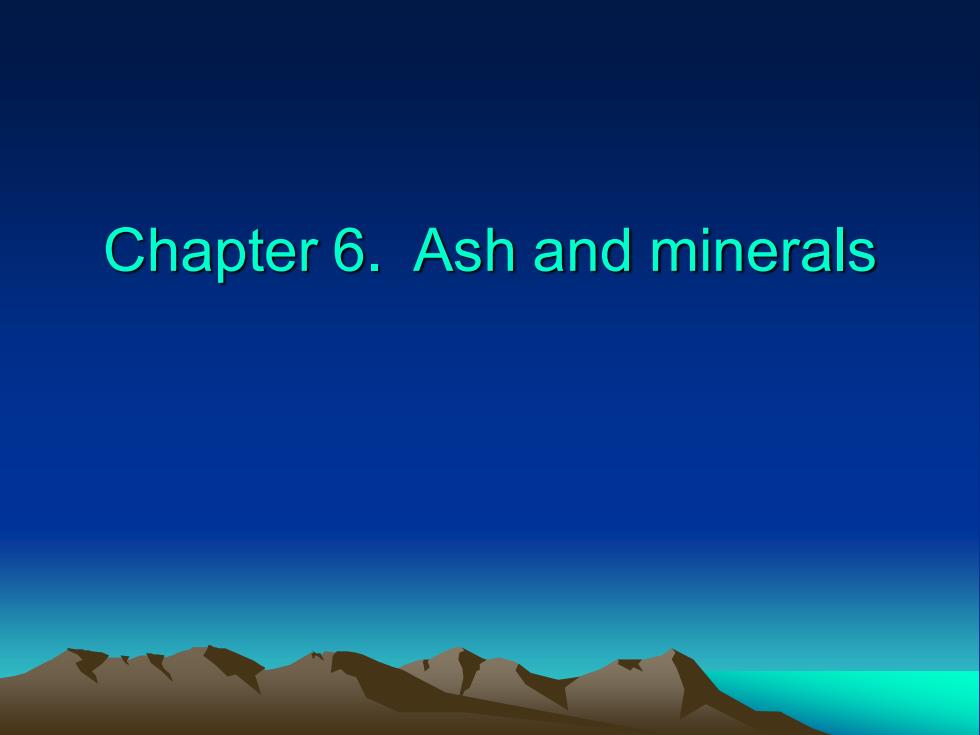
Chapter 6. Ash and minerals
Chapter 6. Ash and minerals
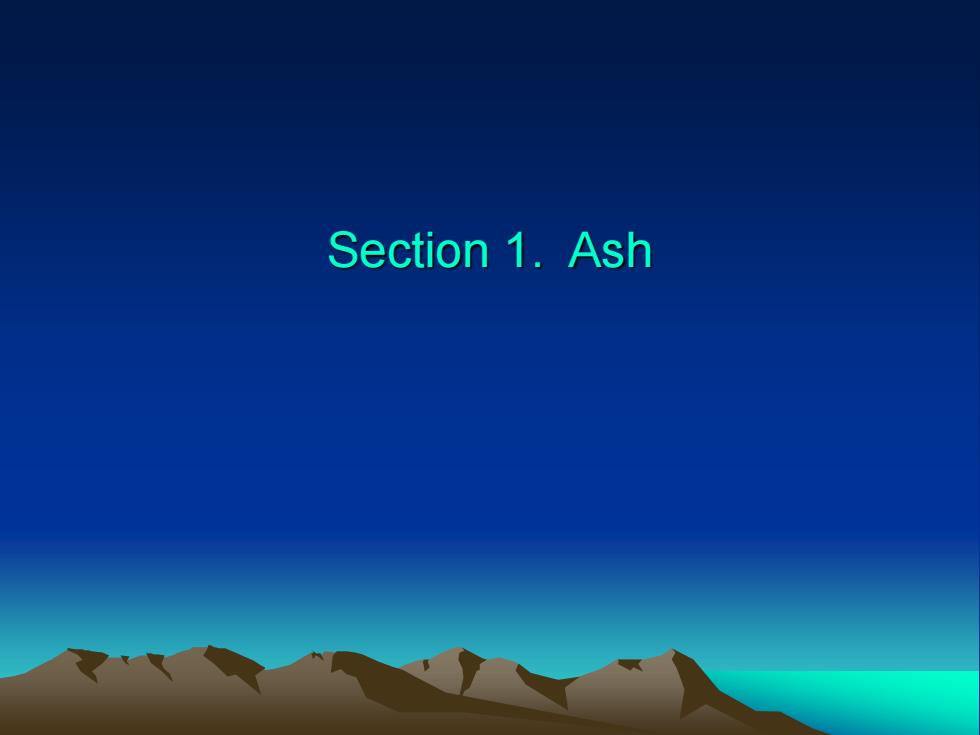
Section 1. Ash
Section 1. Ash
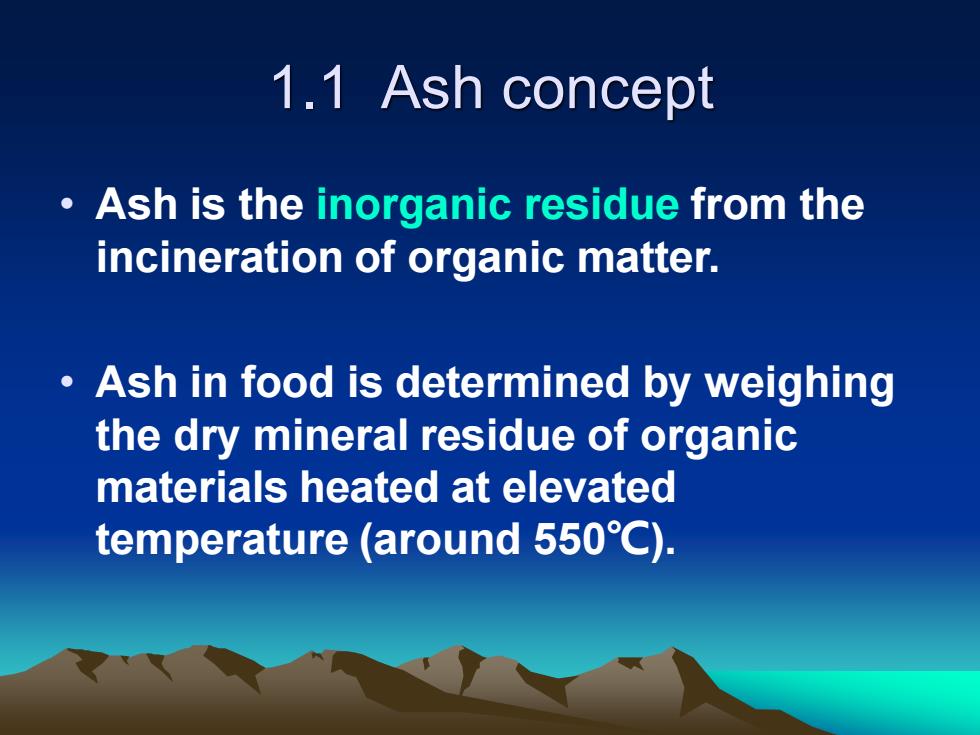
1.1 Ash concept • Ash is the inorganic residue from the incineration of organic matter. • Ash in food is determined by weighing the dry mineral residue of organic materials heated at elevated temperature (around 550℃)
1.1 Ash concept • Ash is the inorganic residue from the incineration of organic matter. • Ash in food is determined by weighing the dry mineral residue of organic materials heated at elevated temperature (around 550℃)
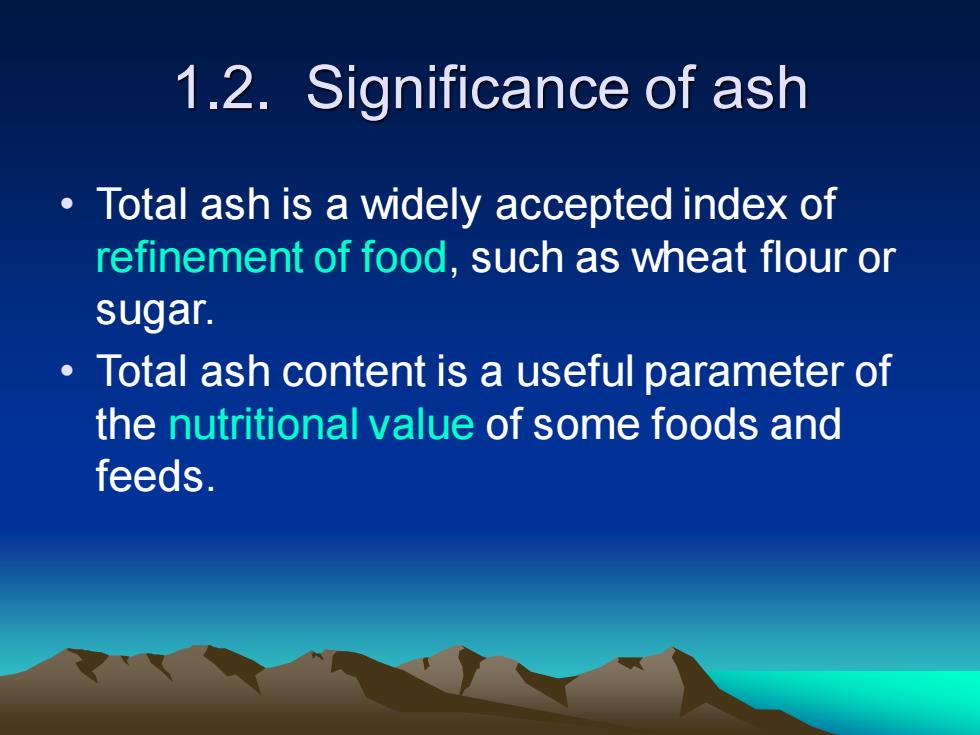
1.2. Significance of ash • Total ash is a widely accepted index of refinement of food, such as wheat flour or sugar. • Total ash content is a useful parameter of the nutritional value of some foods and feeds
1.2. Significance of ash • Total ash is a widely accepted index of refinement of food, such as wheat flour or sugar. • Total ash content is a useful parameter of the nutritional value of some foods and feeds
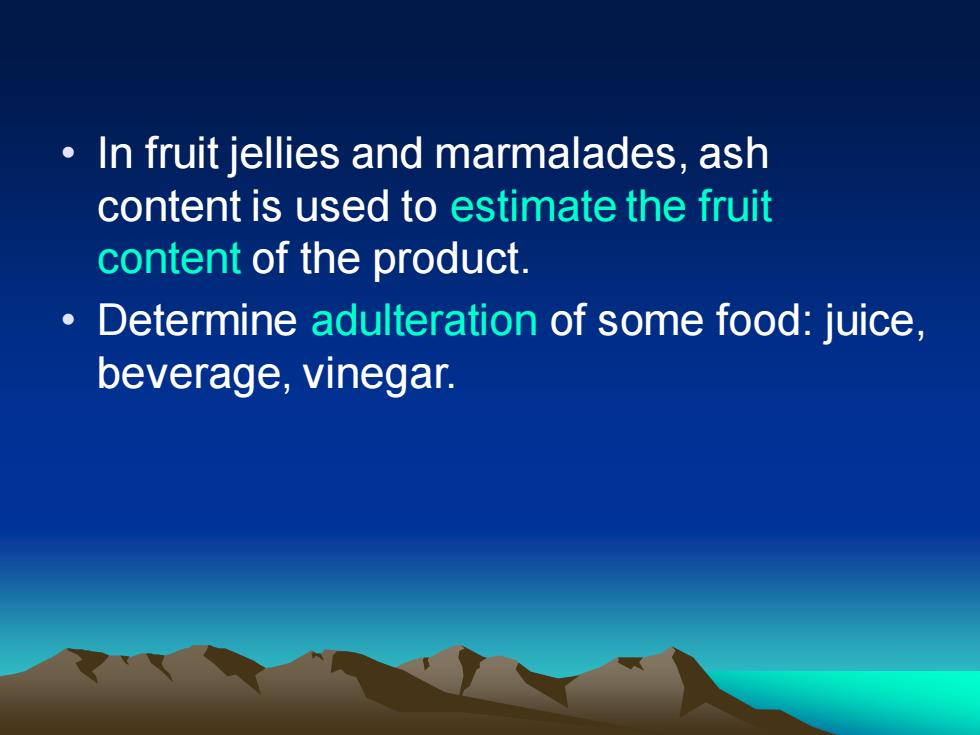
• In fruit jellies and marmalades, ash content is used to estimate the fruit content of the product. • Determine adulteration of some food: juice, beverage, vinegar
• In fruit jellies and marmalades, ash content is used to estimate the fruit content of the product. • Determine adulteration of some food: juice, beverage, vinegar
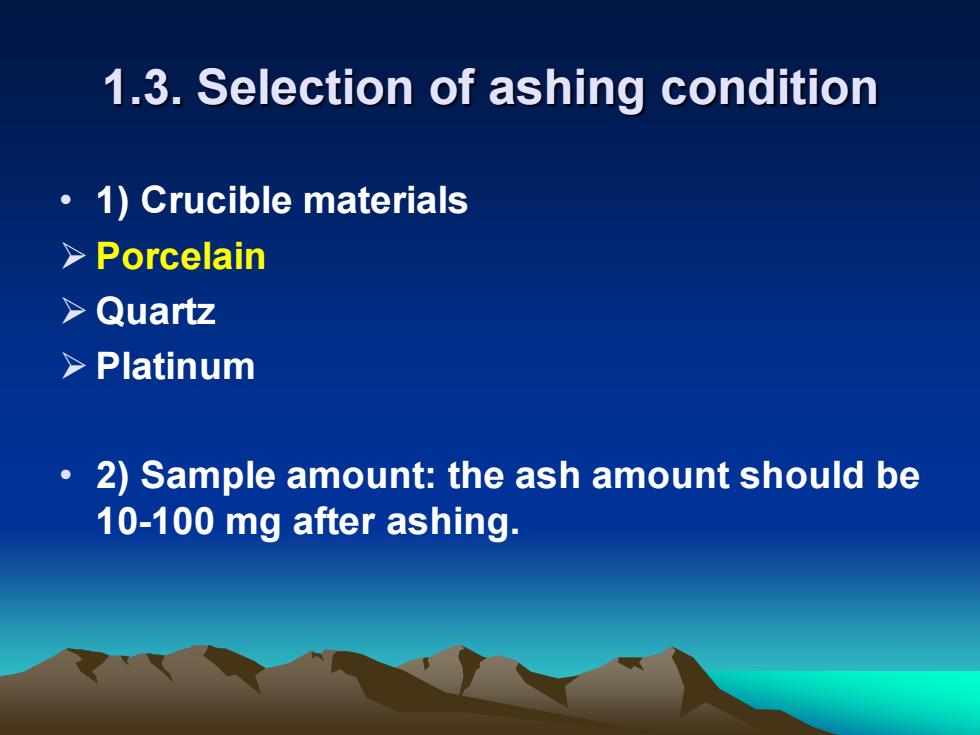
1.3. Selection of ashing condition • 1) Crucible materials ➢ Porcelain ➢ Quartz ➢ Platinum • 2) Sample amount: the ash amount should be 10-100 mg after ashing
1.3. Selection of ashing condition • 1) Crucible materials ➢ Porcelain ➢ Quartz ➢ Platinum • 2) Sample amount: the ash amount should be 10-100 mg after ashing

• 3) Temperature: 500- 600℃ • 4) Time: about 2-5 hours. The ash should be white or grey colour, and no carbon granules in it
• 3) Temperature: 500- 600℃ • 4) Time: about 2-5 hours. The ash should be white or grey colour, and no carbon granules in it

1.4. Determination procedure • 1) Preparation of porcelain crucible • 2) Pretreatment of sample • 3) Charring: Why should sample be charred before ashing? • 4) Ashing
1.4. Determination procedure • 1) Preparation of porcelain crucible • 2) Pretreatment of sample • 3) Charring: Why should sample be charred before ashing? • 4) Ashing
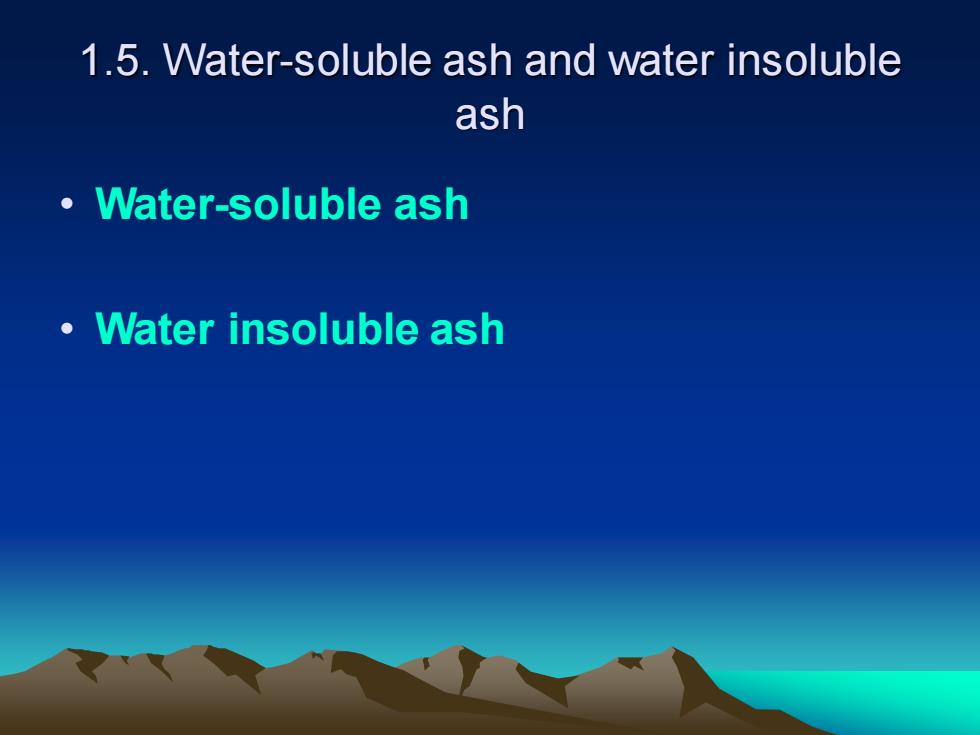
1.5. Water-soluble ash and water insoluble ash • Water-soluble ash • Water insoluble ash
1.5. Water-soluble ash and water insoluble ash • Water-soluble ash • Water insoluble ash

Section 2. Mineral elements
Section 2. Mineral elements